Finches as Pets – How to Choose the Right Species
Introduction: Discovering the World of Finches as Pets
The gentle chirping of finches as pets has captivated bird enthusiasts for generations, offering a perfect introduction to avian companionship without the demanding requirements of larger birds. These diminutive creatures pack remarkable personality into their small frames, displaying complex social behaviors and stunning visual diversity that continues to surprise even experienced keepers.
Unlike their larger parrot cousins, finches as pets thrive on social interaction with their own kind rather than constant human attention. This unique characteristic makes them ideal for busy households seeking the joy of bird ownership without intensive daily handling requirements. Their melodious conversations and vibrant colors transform any living space into a miniature aviary experience.
This comprehensive guide explores every aspect of keeping finches as pets, from species selection and housing requirements to advanced breeding techniques and health management. Whether you’re considering your first pair of zebra finches or planning a diverse community aviary, understanding these remarkable birds ensures years of successful companionship.
The journey of finches as pets ownership rewards patience and observation. These intelligent creatures develop intricate social hierarchies, demonstrate problem-solving abilities, and form lasting pair bonds that rival those of much larger species. Their adaptability to various housing situations makes them suitable for apartment dwellers and estate owners alike.
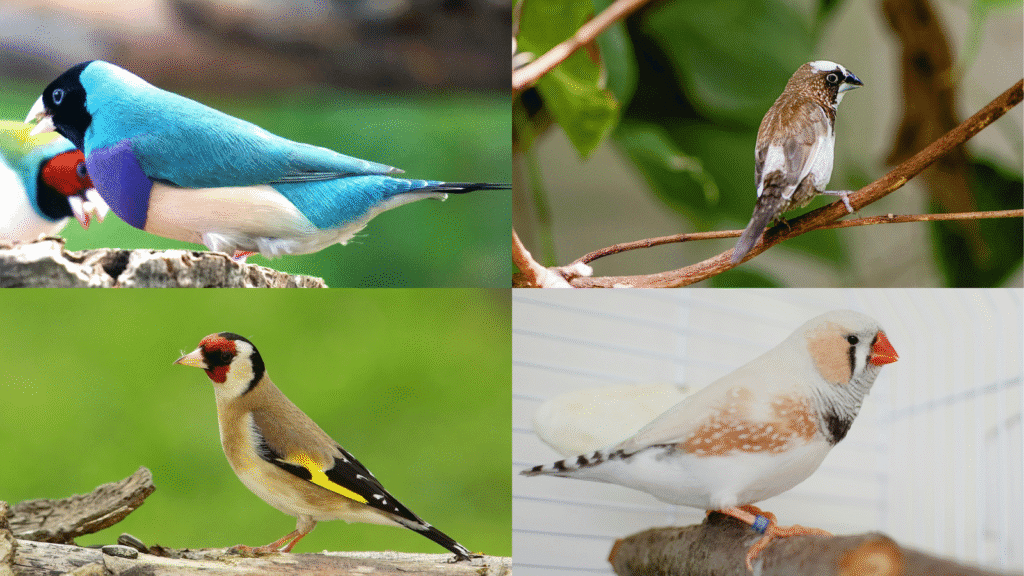
Below: Left: European goldfinch Right: Zebra finch
Table of Contents
Understanding Finch Species: Choosing Your Perfect Companions
Popular Beginner Species for New Owners
Finches as pets encompass hundreds of species, but certain varieties stand out as particularly suitable for novice keepers. Zebra finches represent the gold standard for beginners, combining hardiness with prolific breeding habits and entertaining personalities. Their distinctive black and white striped patterns and cheerful dispositions make them perpetual favorites among finches as pets enthusiasts.
Society finches, also known as Bengalese finches, offer another excellent entry point into finches as pets ownership. These domesticated birds lack wild counterparts, having been selectively bred for centuries to enhance their calm temperaments and nurturing instincts. Their willingness to foster eggs and chicks from other species makes them invaluable in mixed aviaries.
Gouldian finches present a more challenging but rewarding option for finches as pets keepers ready to advance beyond basic species. Their rainbow plumage requires careful attention to diet and environmental conditions, but successfully maintaining these living jewels provides immense satisfaction and stunning visual displays.
Intermediate Species for Experienced Keepers
Java sparrows, despite their name, belong to the finch family and make excellent finches as pets for those seeking larger, more interactive birds. Their intelligence and capacity for learning simple tricks bridge the gap between traditional finches and more demanding pet bird species.
Canary-winged finches and star finches offer beautiful song and striking appearances while requiring moderate care levels. These finches as pets species reward dedicated keepers with complex vocalizations and interesting nesting behaviors that provide endless entertainment and learning opportunities.
Advanced Species for Dedicated Enthusiasts
Waxbills, fire finches, and parrot finches represent the pinnacle of finches as pets keeping challenges. These species demand specialized diets, precise environmental controls, and extensive breeding expertise. However, their rarity and exceptional beauty make them highly prized among serious aviculturists.
Diamond sparrows and orange-cheeked waxbills showcase the incredible diversity available within finches as pets keeping. Their specific habitat requirements mirror their wild environments, necessitating planted aviaries and carefully controlled climatic conditions.
Housing Requirements: Creating the Perfect Environment
Indoor Housing Solutions
Proper housing forms the foundation of successful finches as pets keeping. Unlike canaries that prefer vertical flight, finches require horizontal space for their natural wing-flapping and short-distance flying behaviors. Minimum cage dimensions should measure 30 inches wide by 18 inches deep by 18 inches high for a single pair, with proportional increases for additional birds.
Flight cages specifically designed for finches as pets feature closely spaced bars (1/2 inch maximum) to prevent escapes while allowing adequate ventilation. Multiple perches positioned at varying heights encourage natural climbing behaviors and provide exercise opportunities essential for maintaining physical health.
The placement of housing for finches as pets significantly impacts their wellbeing. Positioning cages near windows provides natural light cycles while avoiding direct sunlight that can cause overheating. Consistent temperature ranges between 65-75°F optimize comfort and reduce stress-related health issues.
Outdoor Aviary Construction
Large outdoor aviaries allow finches as pets to express natural behaviors impossible in indoor settings. Minimum dimensions should provide 6 feet of length per pair, with heights of 8-10 feet accommodating natural flight patterns. Double-door entry systems prevent escapes during maintenance and feeding routines.
Weather protection becomes crucial for outdoor finches as pets installations. Covered areas should encompass at least one-third of the total space, providing shelter from rain, wind, and excessive sun exposure. Solid walls on three sides create windbreaks while maintaining adequate ventilation.
Predator-proofing outdoor aviaries requires careful attention to construction details. Hardware cloth with 1/2-inch openings prevents snake entry while maintaining visibility. Buried foundations extending 12 inches below ground level deter digging predators from accessing finches as pets from below.
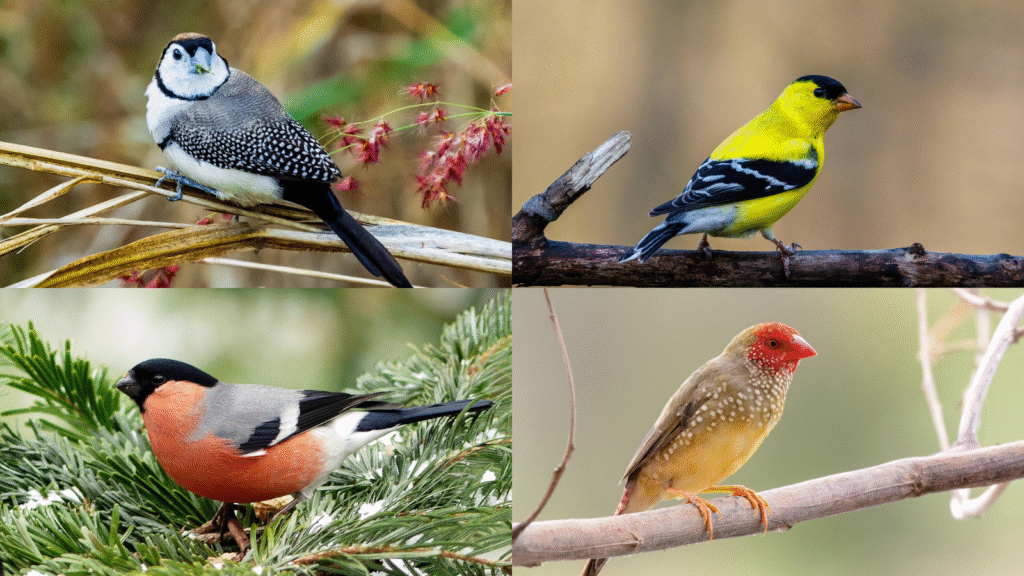
Below: Left: Eurasian bullfinch Right:Star finch
Nutritional Excellence: Feeding Your Finches Properly
Foundation Diet: Seed Mixtures and Pellets
The cornerstone of finches as pets nutrition revolves around high-quality seed mixtures formulated specifically for small finch species. Premium blends contain white millet, canary seed, niger (thistle), and small amounts of sunflower seeds in proportions matching wild dietary patterns. Avoid mixtures containing excessive filler seeds or artificial colorings that provide minimal nutritional value.
Pelletized diets offer complete nutrition for finches as pets but require gradual introduction to prevent rejection. Many keepers successfully combine pellets with seed mixtures, providing balanced nutrition while maintaining feeding enjoyment. Fresh pellets should replace stale portions weekly to ensure optimal nutritional content.
Sprouted seeds dramatically increase nutritional value while providing variety in finches as pets diets. Soak seeds for 12-24 hours, then rinse and allow germination for another 24-48 hours before serving. This process enhances vitamin content and improves digestibility, particularly beneficial during breeding and molting periods.
Fresh Foods: Vegetables and Fruits
Finches as pets benefit enormously from fresh produce additions to their daily diet. Dark leafy greens such as spinach, kale, and dandelion provide essential vitamins and minerals while adding variety to feeding routines. Finely chopped broccoli, carrots, and sweet potatoes offer beta-carotene crucial for maintaining vibrant plumage.
Seeding grasses present natural foraging opportunities for finches as pets while providing nutrients unavailable in commercial preparations. Chickweed, plantain, and dandelion heads allow birds to extract seeds using natural feeding behaviors, promoting mental stimulation alongside nutritional benefits.
Fruits should complement rather than dominate finches as pets diets due to their high sugar content. Small portions of apple, berries, and melon provide vitamins and antioxidants while serving as training treats. Remove uneaten fresh foods within 2-4 hours to prevent spoilage and bacterial contamination.
Breeding Season Nutrition
Finches as pets preparing for breeding require enhanced nutrition to support egg production and chick development. Egg food mixtures combining hard-boiled eggs, commercial egg food, and crushed seeds provide essential amino acids for reproductive success. Increase protein offerings gradually as breeding behavior intensifies.
Calcium supplementation becomes critical for egg-laying females among finches as pets. Cuttlefish bone, mineral blocks, and calcium-enriched grit ensure proper shell formation while preventing egg-binding complications. Monitor calcium intake carefully, as excessive amounts can cause kidney problems.
Live food options such as mealworms and fruit flies stimulate natural hunting instincts in finches as pets while providing easily digestible protein. These supplements prove particularly valuable when parents are feeding demanding chicks requiring frequent, protein-rich meals.
Breeding Finches: From Courtship to Fledging
Understanding Breeding Cycles
Finches as pets typically breed during spring and summer months when daylight hours extend beyond 12 hours daily. Artificial lighting can manipulate breeding cycles, but following natural patterns reduces stress and improves success rates. Males begin displaying courtship behaviors including increased singing, dancing, and nest-building activities.
Pair bonding in finches as pets often develops gradually over several weeks or months. Compatible pairs engage in mutual preening, feeding behaviors, and synchronized movements that indicate successful bonding. Forced pairings rarely succeed, making natural selection processes preferable for breeding programs.
Environmental triggers play crucial roles in breeding readiness among finches as pets. Temperature stability, adequate nutrition, and secure nesting sites must align before pairs attempt reproduction. Sudden changes in any of these factors can disrupt breeding cycles and cause nest abandonment.
Nesting Requirements by Species
Different finches as pets species exhibit varying nesting preferences requiring specific accommodations. Zebra finches readily accept enclosed nest boxes, wicker baskets, or even artificial foliage arrangements. Society finches prefer partially open nests allowing easy access while maintaining some privacy.
Gouldian finches require completely enclosed nesting boxes similar to budgerigar nest boxes. These birds prefer darker, more secure environments for successful breeding. Entrance holes should measure 1.5 inches in diameter to accommodate adult birds while preventing larger species from interfering.
Waxbill species among finches as pets prefer natural nesting materials and dense vegetation. Provide coconut fiber, dried grass, and small twigs for nest construction. These birds often build elaborate dome-shaped nests requiring substantial material quantities and construction time.
Incubation and Chick Development
Finches as pets typically lay 3-6 eggs with incubation periods lasting 12-14 days. Both parents usually share incubation duties, alternating sessions throughout the day. Avoid disturbing nests during this critical period, as excessive interference can cause abandonment.
Newly hatched finches as pets chicks require frequent feeding every 15-20 minutes during daylight hours. Parents produce crop milk and regurgitate partially digested seeds to feed their offspring. Provide abundant soft foods including egg food, sprouted seeds, and finely chopped greens during this demanding period.
Fledging occurs 18-21 days after hatching for most finches as pets species. Young birds may return to the nest for several nights after first flight attempts. Continue providing enriched diets until juveniles achieve complete independence, typically 2-3 weeks post-fledging.
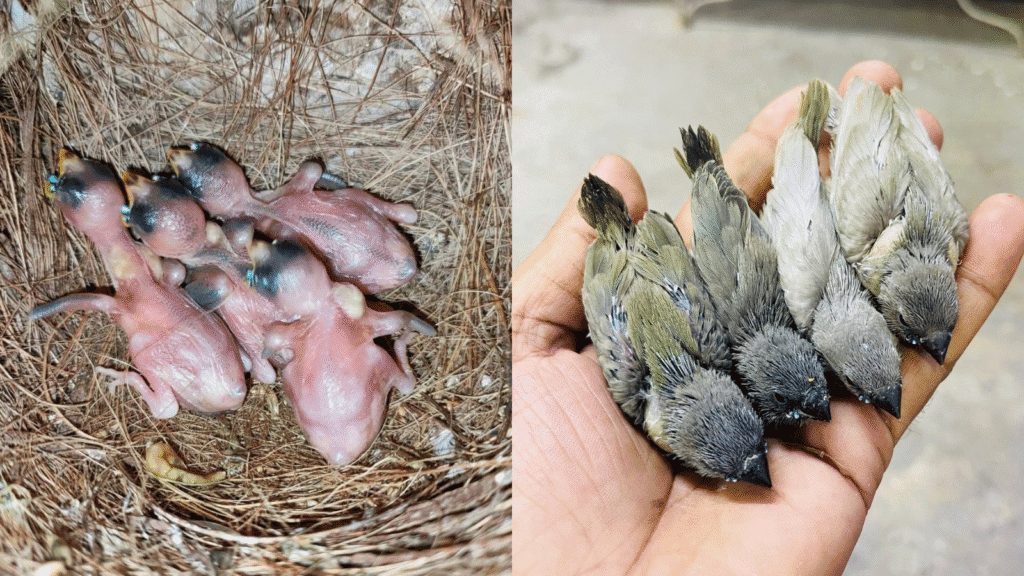
Health Management: Keeping Your Finches Healthy
Preventive Healthcare Measures
Daily health monitoring forms the cornerstone of successful finches as pets care. Observe eating habits, activity levels, and social interactions for any deviations from normal patterns. Healthy birds display alert postures, engage in regular preening behaviors, and maintain consistent feeding schedules.
Weight monitoring provides early disease detection for finches as pets. Weekly weigh-ins using gram scales reveal subtle changes indicating potential health issues before visible symptoms appear. Maintain detailed records documenting weight fluctuations alongside environmental and dietary changes.
Quarantine procedures protect existing finches as pets from diseases carried by new arrivals. Isolate new birds for 30-45 days in separate housing, monitoring for signs of illness before introducing them to established flocks. This practice prevents devastating outbreaks that can affect entire aviaries.
Common Health Issues
Finches as pets are susceptible to various health challenges requiring prompt recognition and treatment. Air sac mites cause respiratory distress, labored breathing, and eventual death if left untreated. These microscopic parasites require veterinary diagnosis and prescription medications for effective elimination.
Egg binding affects female finches as pets when eggs become lodged in the reproductive tract. Symptoms include straining, swollen abdomen, and lethargy. Immediate veterinary intervention is crucial, as this condition can be fatal within hours. Proper nutrition and environmental conditions help prevent this serious complication.
Bacterial infections can affect finches as pets through contaminated food, water, or housing conditions. Symptoms include diarrhea, lethargy, and loss of appetite. Maintain strict hygiene protocols including daily water changes, regular cage cleaning, and proper food storage to minimize bacterial exposure.
Emergency Preparedness
Finches as pets require immediate medical attention for various emergency situations. Establish relationships with avian veterinarians before emergencies arise, as general practitioners may lack specialized finch knowledge. Keep emergency contact information readily accessible in bird care areas.
Hospital cage setups provide controlled environments for sick finches as pets. These smaller enclosures include heating elements, easy food access, and minimal stress factors. Maintain hospital cages as permanent equipment rather than improvising during emergencies.
Basic first aid supplies for finches as pets should include styptic powder for bleeding, heating pads for temperature regulation, and electrolyte solutions for dehydration. However, these measures supplement rather than replace professional veterinary care for serious conditions.
Advanced Husbandry: Mixed Species and Community Aviaries
Compatible Species Combinations
Creating successful mixed-species aviaries requires careful consideration of finches as pets compatibility factors. Peaceful species such as zebra finches, society finches, and Gouldian finches coexist harmoniously when provided adequate space and resources. Avoid combining aggressive species during breeding seasons when territorial behaviors intensify.
Size disparities between finches as pets species can create problems in mixed aviaries. Larger species may dominate feeding stations and prime nesting sites, stressing smaller birds. Provide multiple feeding and watering stations positioned at various heights to accommodate different species preferences.
Dietary requirements vary among finches as pets species, necessitating specialized feeding strategies in mixed aviaries. Some species require live food supplements while others thrive on seed-based diets. Research individual species needs before combining them in shared environments.
Territorial Management
Finches as pets establish territories within aviaries, particularly during breeding seasons. Provide visual barriers using plants, screens, or artificial decorations to create separate territories reducing aggressive interactions. Dense foliage allows subordinate birds to escape dominant individuals when necessary.
Nesting site competition can create serious conflicts among finches as pets in mixed aviaries. Offer multiple nesting options positioned at different heights and locations throughout the enclosure. Excess nesting sites reduce competition while allowing birds to select preferred locations.
Feeding station management prevents resource guarding behaviors in finches as pets communities. Position multiple food and water sources throughout the aviary, ensuring all birds can access nutrition without confrontation. Scatter feeding techniques encourage natural foraging behaviors while reducing competition.
Breeding Management in Mixed Aviaries
Controlling reproduction in mixed-species finches as pets aviaries requires strategic planning and intervention. Some species readily hybridize, producing offspring with uncertain genetics and potential health issues. Remove or relocate breeding pairs when hybridization becomes likely.
Nest monitoring becomes complex in mixed finches as pets aviaries where multiple species breed simultaneously. Maintain detailed records of breeding pairs, nest locations, and reproductive success rates. This information helps identify successful combinations and problematic interactions.
Foster parenting opportunities arise when finches as pets abandon nests or fail to rear chicks successfully. Society finches excel as foster parents, readily accepting eggs and chicks from other species. This capability makes them invaluable in mixed breeding programs.
Seasonal Care: Adapting to Changing Conditions
Spring and Summer Management
Extended daylight hours during spring and summer trigger breeding behaviors in finches as pets. Increase protein-rich foods and calcium supplements to support reproductive activities. Monitor pairs closely for signs of breeding readiness including nest-building and courtship displays.
Higher temperatures during summer months require enhanced ventilation and cooling measures for finches as pets. Provide shade cloth over outdoor aviaries and ensure adequate air circulation in indoor housing. Fresh bathing water becomes crucial for temperature regulation and feather maintenance.
Parasite activity increases during warm months, requiring vigilant monitoring of finches as pets for signs of infestation. Implement preventive measures including regular cage cleaning, parasite treatments, and quarantine procedures for new arrivals. Early detection prevents widespread outbreaks.
Fall and Winter Adaptations
Shorter daylight hours signal rest periods for finches as pets, naturally reducing breeding activities and triggering molting cycles. Adjust artificial lighting schedules to match natural patterns, providing 8-10 hours of light daily during winter months.
Cold weather protection becomes essential for finches as pets in outdoor aviaries. Provide windbreaks, insulated shelters, and supplemental heating when necessary. Monitor birds closely for signs of cold stress including fluffed feathers and decreased activity levels.
Dietary adjustments during winter months help finches as pets maintain energy reserves for thermoregulation. Increase fat content slightly while continuing to provide varied nutrition. Sprouted seeds become particularly valuable during this period for their enhanced nutritional content.
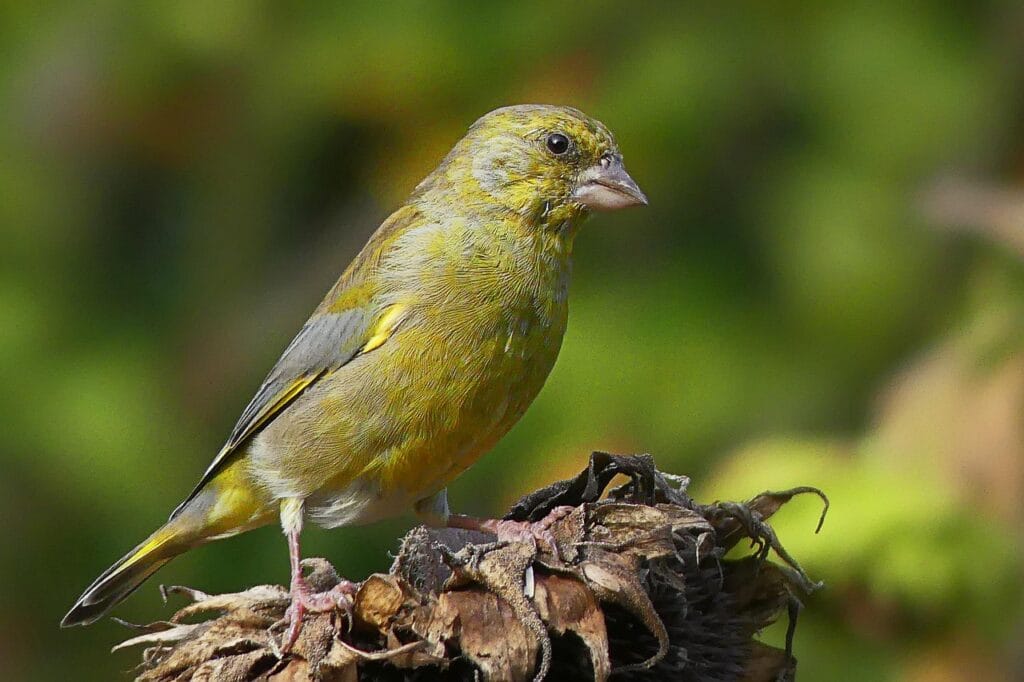
Environmental Enrichment: Creating Natural Experiences
Physical Enrichment Strategies
Finches as pets require environmental enrichment to maintain psychological well-being and prevent behavioral problems. Natural branches of varying diameters provide exercise opportunities while helping maintain beak and nail health through natural wear patterns. Rotate branch types regularly to provide novel experiences.
Foraging opportunities stimulate natural behaviors in finches as pets while providing mental stimulation. Hide seeds in paper containers, hang seeding grasses, or scatter food items throughout the enclosure to encourage exploration and problem-solving activities.
Bathing facilities offer both hygiene benefits and entertainment for finches as pets. Provide shallow dishes, dripping water features, or misting systems to accommodate different species preferences. Regular bathing maintains feather condition and provides stress relief.
Social Enrichment Considerations
Finches as pets are inherently social creatures requiring companionship for optimal well-being. Single birds often develop behavioral problems including excessive vocalization, feather plucking, and stereotypic behaviors. Provide same-species companionship whenever possible.
Flock dynamics create natural social structures among finches as pets groups. Observe interactions to identify compatible individuals while monitoring for signs of bullying or excessive aggression. Adjust group compositions as needed to maintain harmonious relationships.
Visual stimulation through environmental changes keeps finches mentally engaged. Rearrange perches, add new plants, or introduce safe toys periodically to prevent boredom and encourage exploration behaviors.
Breeding Programs: Genetics and Line Development
Understanding Finch Genetics
Finches breeding programs benefit from basic genetic knowledge to predict offspring characteristics and avoid inbreeding depression. Color mutations, pattern variations, and size differences follow predictable inheritance patterns that dedicated breeders can manipulate through selective breeding.
Record keeping becomes essential for serious finches breeding programs. Document parentage, breeding dates, offspring characteristics, and health information for each bird. This data helps identify successful breeding combinations while tracking genetic diversity within bloodlines.
Line breeding techniques allow finches breeders to concentrate desired traits while maintaining genetic diversity. Carefully planned breeding programs can enhance song quality, coloration, or size while avoiding the negative effects of excessive inbreeding.
Selective Breeding Strategies
Finches as pets breeding programs should focus on health and temperament alongside aesthetic qualities. Select breeding stock based on disease resistance, reproductive success, and stable temperaments rather than solely on appearance factors.
Outcrossing introduces new genetic material to established finches as pets lines, preventing inbreeding depression while potentially improving vigor and disease resistance. Carefully evaluate new bloodlines before incorporating them into breeding programs.
Culling decisions require objective evaluation of finches as pets quality and breeding potential. Remove birds with genetic defects, poor temperaments, or inferior characteristics from breeding programs while maintaining those that improve overall line quality.
Conservation and Rare Species
Captive Breeding Programs
Finches as pets keepers contribute to conservation efforts through responsible captive breeding programs. Many species face declining wild populations due to habitat loss, making captive populations increasingly important for species preservation.
Studbook maintenance ensures genetic diversity within captive finches as pets populations. These detailed records track lineages, prevent inbreeding, and coordinate breeding efforts among multiple facilities and private breeders.
Reintroduction programs sometimes utilize finches as pets from captive breeding programs to supplement wild populations. These efforts require careful genetic management and extensive preparation to ensure successful adaptation to wild conditions.
Ethical Considerations
Finches as pets ownership carries responsibilities beyond individual bird care. Support conservation efforts, avoid purchasing wild-caught birds, and participate in responsible breeding programs that contribute to species preservation rather than simply producing pets.
Education and outreach help promote responsible finches as pets keeping practices. Share knowledge with other enthusiasts, support conservation organizations, and encourage sustainable practices within the hobby community.
Building Community: Clubs and Shows
Joining Finch Societies
Finches as pets enthusiasts benefit greatly from joining local and national bird clubs. These organizations provide educational resources, breeding opportunities, and social connections with fellow enthusiasts sharing similar interests and challenges.
Club activities often include monthly meetings, educational presentations, and group purchases of supplies at reduced costs. Many clubs also organize field trips to professional aviaries and participate in conservation efforts supporting wild finch populations.
Exhibition and Competition
Finches as pets shows provide opportunities to display breeding achievements while learning from other exhibitors. Competition categories typically include type, color, and condition classes judged according to established standards for each species.
Preparing finches as pets for exhibition requires attention to conditioning, training, and presentation. Show birds must display excellent health, proper conformation, and calm temperaments when handled by judges and spectators.
Awards and recognition motivate continued improvement in finches as pets breeding programs. Successful exhibitors often become respected mentors within the hobby, sharing knowledge and breeding stock with newcomers.
Conclusion: The Lifelong Journey of Finch Keeping
Finches as pets offer a unique window into the fascinating world of avian behavior and biology. These remarkable creatures provide daily joy through their cheerful songs, vibrant colors, and complex social interactions that continue to surprise and delight keepers at every experience level.
The journey of finches as pets ownership extends far beyond basic pet care, encompassing genetics, behavior, conservation, and community involvement. Each day brings new observations and learning opportunities that deepen appreciation for these remarkable birds.
Success with finches requires patience, dedication, and continuous learning. The rewards include not only personal satisfaction but also contributions to species preservation and the advancement of avicultural knowledge for future generations of enthusiasts.
Whether maintaining a simple pair of zebra finches or managing a complex community aviary, finches as pets provide endless opportunities for growth, discovery, and connection with the natural world. Their resilience, beauty, and engaging personalities ensure that finch keeping remains a rewarding and enriching hobby for years to come.
FAQ
How many finches as pets should I start with as a beginner?
Start with a pair of hardy species like zebra finches or society finches. These birds are social and do best in pairs, while single birds often develop behavioral problems from loneliness.
Can finches as pets be kept in the same cage as other bird species?
Yes, but only with careful species selection and adequate space. Peaceful finches can coexist with similar-sized species like canaries, but avoid mixing with aggressive birds or those requiring different diets.
How long do finches as pets typically live?
Most finches as pets live 5-10 years with proper care, though some species like Gouldian finches may have shorter lifespans while others can reach 12-15 years in optimal conditions.
Do finches as pets require special veterinary care?
Yes, finches need avian veterinarians familiar with small bird species. Regular check-ups, proper diet, and prompt attention to health issues are essential for maintaining their well-being.
Did you enjoy this article?
Help other pet lovers benefit too — Share it on social media! 🐾💚
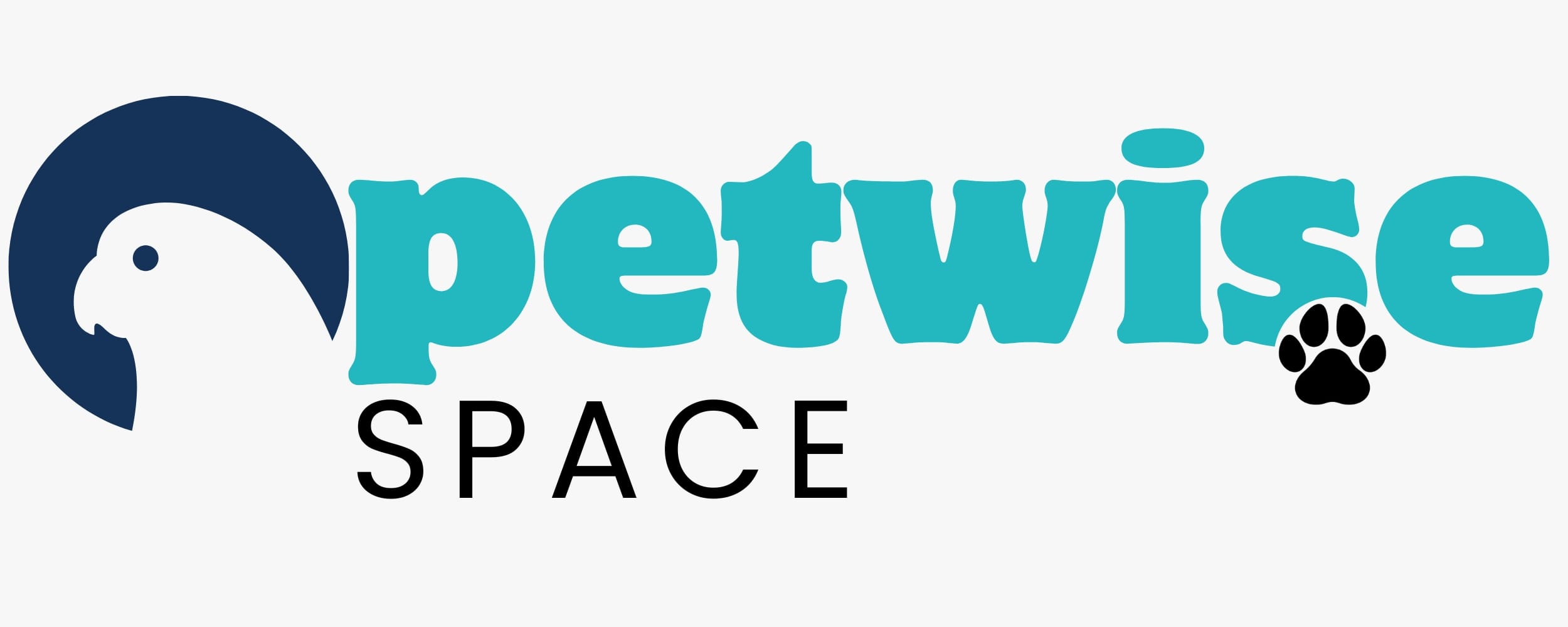
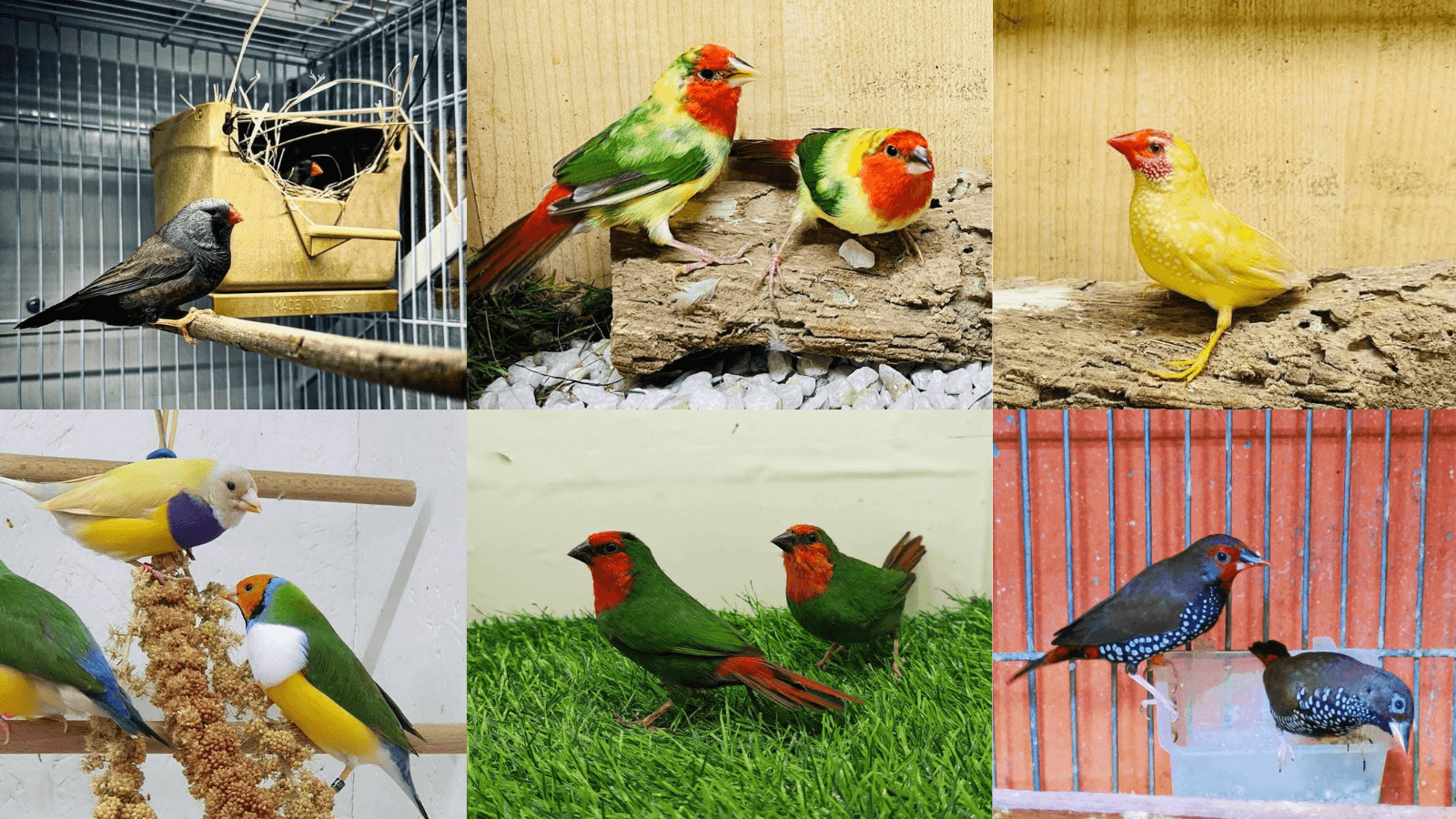
Leave a Reply